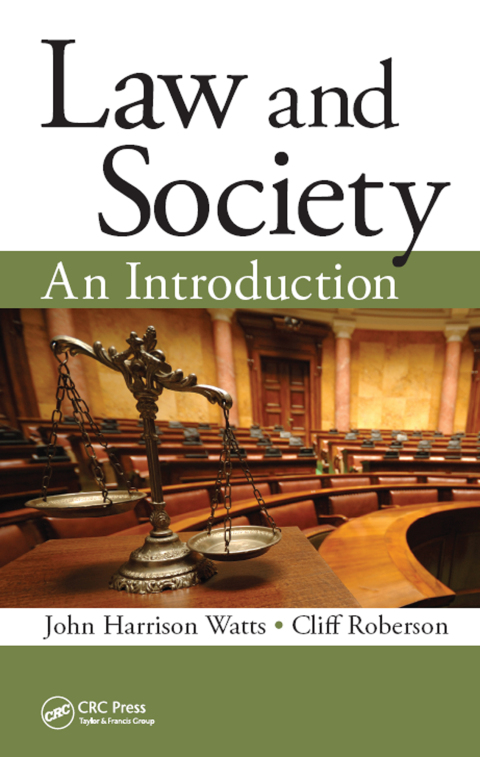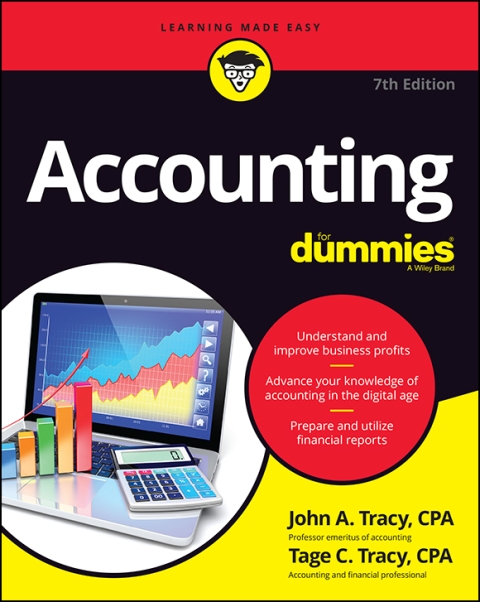Description
Efnisyfirlit
- Cover
- Half Title
- Title Page
- Copyright Page
- Dedication
- Table of Contents
- Preface
- About the Authors
- 1 An Overview of Law and Society
- Chapter Objectives
- Introduction
- Law and Society
- Definitions of Law
- Functions of the Legal System
- Dysfunctions of the Legal System
- Law and Morality
- Classifications of Legal Rules
- Approaches to Law and Society
- Consensus Paradigm
- Conflict Paradigm
- Rule of Law
- Summary
- Questions in Review
- Practicum
- Endnotes
- 2 Legal Systems
- Chapter Objectives
- Common-Law Systems
- Civil-Law Systems
- Islamic
- Socialist
- American Indian Law
- Theories of Law
- Natural Law
- Legal Positivism
- European Pioneer Theorists
- Baron de Montesquieu (Charles Louis de Secondat 1689–1755)
- Herbert Spencer (1820–1903)
- Sir Henry Sumner Maine (1822–1888)
- Interrelationship between Society and Law
- Karl Marx (1818–1883)
- Max Weber (1864–1920)
- Emile Durkheim (1858–1917)
- Sociological Jurisprudence Movement
- Roscoe Pound
- Benjamin Nathan Cardozo (1870–1938)
- Legal Realism
- Oliver Wendell Holmes
- Karl Llewellyn (1893–1962)
- Jerome Frank (1889–1957)
- Max Gluckman (1911–1975)
- Modern Legal Theorists
- John Rawls
- Richard Posner
- Laura Nader
- Donald Black
- Edward Levi
- Critical Legal Studies
- Feminist Legal Theories
- Critical Race Theory
- Summary
- Questions in Review
- Endnotes
- 3 Social Research Methods
- Chapter Objectives
- Introduction
- Fundamentals of Research
- Methods of Inquiry
- The Experimental Method
- The Classic Experimental Design
- The Solomon Four-Group Design
- The Posttest-Only Control-Group Design
- Quasi-Experimental Designs
- Nonrandomized Control Group Pretest-Posttest Design
- Time-Series Designs
- Equivalent Time-Samples Design
- The Observation Method
- Types of Participant Observation
- Simulation Research
- The Survey Method
- Personal Interviews
- Telephone Interviews
- Mail Surveys
- Historical and Archival Research
- The Case Study
- Policy and Evaluation Research
- Differentiating Between Social and Criminal Justice
- Questions in Review
- Key Terms
- Endnotes
- 4 Legal Structures
- Chapter Objectives
- Introduction
- Courts
- Court Jurisdiction
- Court Organization
- The State Court System
- Courts of Limited and Specific Jurisdiction
- State Court of Appeals
- Federal Court System
- U.S. District Courts
- U.S. Courts of Appeals
- Supreme Court of the United States
- Court Unification Movements
- Classifications of Law
- Common Law and Civil Law Systems
- Sources of Law: Constitutional, Statutory, and Case Law
- Constitutional Law
- Statutory Law
- Case Law
- Scope of the Law
- Administrative Law
- Civil and Criminal Law
- Functions: Substantive and Procedural Law
- Participants
- Litigants
- Counsel
- Judges
- Juries
- Grand Juries
- The Court Administrator
- Flow of Litigation in Civil Proceedings
- Flow of Criminal Proceedings
- Lawmaking
- U.S. Congress
- State Legislatures
- How a Bill Becomes a Law
- Introduction of a Bill
- Assignment to Committee
- First, Second, and Third Readings
- Senate
- Conference Committees
- Executive Actions
- Administrative Agencies and Rulemaking
- Lobbyists
- Governance of Lobbyists
- Law Enforcers
- Local Law Enforcement
- State Law Enforcement
- Federal Law Enforcement
- Punishment
- Sentencing Guidelines
- Correctional Institutions
- Community-Based Corrections
- Summary
- Questions in Review
- Endnotes
- 5 Social Control
- Chapter Objectives
- Behavior and Social Controls
- Informal Social Controls
- Enforcement of Norms
- Social Norms and Deviance
- Moral Learning
- Formal Controls
- Criminal Law
- Texas Penal Code, Section 49.02
- Victimless Crimes
- White-Collar Crimes
- Civil Commitment
- Administrative Law
- Tort Law
- Contract Law
- Controlling Dissent
- Individual Rights versus Law and Order
- Civil Disobedience
- Freedoms of Speech, Association, and Press
- Language Morphology Issues
- Summary
- Questions in Review
- Endnotes
- 6 Lawmaking as a Form of Social Control
- Chapter Objectives
- Introduction
- Nature of Lawmaking
- Group-Influence Model
- Functionalist View
- Conflict Perspective
- Legislative Lawmaking
- Legislative Committee Work
- Role Orientation
- Term Limits
- Congressional Investigation
- Administrative Lawmaking
- Proclamations and Executive Orders
- Judicial Lawmaking
- The Use of Writs
- Lawmaking by Precedents
- Interest Groups
- Source of Funds
- Questions in Review
- Endnotes
- 7 Dispute Resolution
- Chapter Objectives
- Introduction
- Hidden Harmony Myth
- Dispute Categories
- Dispute Resolution Methods
- Hierarchy of Types
- Litigation as a Means of Resolving Disputes
- Alternative Dispute Resolution
- Court-Annexed Arbitration
- Mediation
- Arbitration
- Selecting an Arbitrator
- Conflict Resolution and Delinquency
- International Arbitration and Mediation
- Questions in Review
- Endnotes
- 8 Social Change and Law
- Chapter Objectives
- Introduction
- Nature of Social Change and Law
- Courts as Mechanism for Social Change
- Magnitude of Court Decisions
- Legitimacy of Law to Create Social Change
- Public Opinion
- Limitations of Law to Create Social Change
- Impact of Social Change on Law
- The Civil Rights Movement
- The Antiwar Movement
- The Women’s Movement
- Rights for Sexual Minorities
- Questions in Review
- Endnotes
- 9 Lawyers
- Chapter Objectives
- Introduction
- The Legal Profession
- The Legal Profession in the United States
- Evolution of the Legal Profession in the United States
- Legal Education
- The Legal Profession Today
- Courthouse Work Groups
- Malpractice
- Private Practice
- Lawyer Advertising
- Should Attorneys Be Allowed to Advertise?
- Advertisement Restrictions
- Solicitation of Clients
- Fields of Practice
- The Internet
- Professional Responsibility
- Lawyer’s Duties to the Client
- Client’s Rights
- Duties to Others
- Conflicts of Interest
- Trial Publicity
- Prohibited Conduct by Attorneys
- Future of the Law
- Summary
- Questions in Review
- Endnotes
- 10 Private Life and the Law
- Chapter Objectives
- Introduction
- Right to Privacy
- Privacy Act of 1974
- Freedom of Information Act
- The Right of Publicity
- The Federal Electronic Communications Privacy Act (ECPA)
- Computer Fraud and Abuse Act
- Abortion
- Pornography
- Pornography and the Internet
- Questions in Review
- Endnotes
- 11 Crime and Justice Issues
- Chapter Objectives
- Introduction
- Exclusionary Rule
- Plea Bargaining
- Hate Crimes
- Stalking
- Interstate Stalking Punishment and Prevention Act of 1996
- Punishment
- State Anti-Stalking Legislation
- Capital Punishment
- The Death Penalty in America
- Imprisonment
- Private Prisons
- Questions in Review
- Endnotes
- 12 Labor Issues and the Law
- Chapter Objectives
- Introduction
- Governmental Labor Policies
- National Labor Relations Act
- Present State of Labor Unions
- Federal Preemption
- Exclusivity
- Employers and Employee Rights
- Bargaining Subjects
- Right-to-Work Laws and Unions
- Concerted Action
- Union Affairs
- Fair Labor Standards Act
- Discrimination
- Equal Employment Opportunity Commission
- Pregnancy
- Age Discrimination
- Reverse Discrimination
- Workers’ Compensation
- Questions in Review
- Endnotes
- Index






